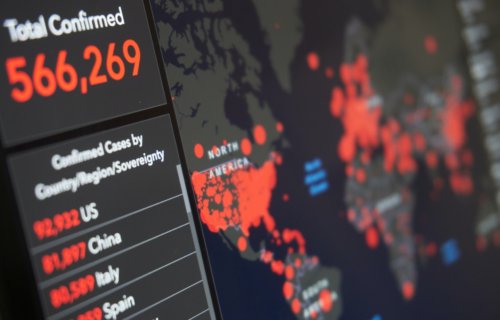PROVIDENCE, R.I. — For scientists, predicting the timing and magnitude of natural disasters is a fundamental goal. However, because they’re so rare statistically, there isn’t sufficient data to accurately forecast them. Now, researchers from Brown University and the Massachusetts Institute of Technology say there’s ways to predict them — with the help of artificial intelligence.
In a new study, they combined statistical algorithms, which require less data to make accurate predictions, with a powerful machine learning (the application of AI) in order to successfully skip the need for excessive data.
“You have to realize that these are stochastic events,” says study author George Karniadakis, a professor of applied mathematics and engineering at Brown, in a university release. “An outburst of pandemic like COVID-19, environmental disaster in the Gulf of Mexico, an earthquake, huge wildfires in California, a 30-meter wave that capsizes a ship — these are rare events and because they are rare, we don’t have a lot of historical data. We don’t have enough samples from the past to predict them further into the future. The question that we tackle in the paper is: What is the best possible data that we can use to minimize the number of data points we need?”
The team found that using active learning, a sequential sampling technique, was the way to go. These algorithms can analyze data input and also learn from what’s been provided to label new data points that are of equal or greater importance. In other words, more can be done with minimal information. The machine learning model that they used is called DeepOnet, a type of artificial neural network that uses interconnected and layered nodes that can mimic the neuronal connections of the human brain.
How does the system predict future events?
Two neural networks work in one with this tool, making it an incredibly powerful resource that can process data in both networks. Ultimately, this allows large amounts of data to be analyzed extremely quickly while generating equally large amounts of data in response. In this work, the researchers were able to demonstrate that DeepOnet, along with active learning techniques, can accurately identify indicators of a disastrous event without lots of available data.
“The thrust is not to take every possible data and put it into the system, but to proactively look for events that will signify the rare events,” Karniadakis says. “We may not have many examples of the real event, but we may have those precursors. Through mathematics, we identify them, which together with real events will help us to train this data-hungry operator.”
The team even found that their method could outperform conventional models and agree that their framework may set a precedent for more efficient predictions of rare natural events. With rogue waves, which are destructive waves that are more than twice the size of surrounding waves, they found that they could uncover when the waves will form by looking at probable conditions over time. In their paper, the team discusses how scientists should design future studies in order to limit costs and forecast with even greater accuracy.
The findings are published in the journal Nature Computational Science.

